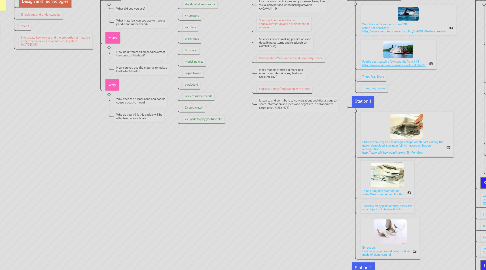
1. Theme
1.1. Students are to design and then create a boat that will race in large water container.
1.2. Lesson 2 of 5 lessons
1.3. There are 5 stations which the students will be exploring different floating materials, creating objects and constructing 2 paddles.
2. Focus Questions
2.1. what
2.1.1. What did you you use?
2.1.2. What materials can you use to make a paddle and rubber band?
2.2. How
2.2.1. How do different sized paddles affect the speed of the boat?
2.2.2. How can you use the material to make a boat which floats?
2.3. why
2.3.1. Why does the rubber band and paddle cause a boat to move?
2.3.2. Why do you think this paddle will be effective on your boat?
3. Materials Required
3.1. 3x large containers filled half way with water
3.2. sheets of aluminium foil
3.3. 4x scissors
3.4. 4x rulers
3.5. sticky tape
3.6. 50x corks
3.7. modelling clay
3.8. paper towels
3.9. cardboard
3.10. pack of rubber bands
3.11. 2x stop watch
3.12. 2x i pads to play youtube clip
4. Australian Technologies Curriculum
4.1. Design and Technologies
4.2. Knowledge and Understanding
4.3. Year 3
4.4. Investigate how forces and the properties of materials affect the behaviour of a product or system (ACTDEK011)
5. Step by Step
5.1. Whole class discussion
5.1.1. Watch about 12 seconds from 0:18, sound not necessary http://www.youtube.com/watchv=jNx_5reIWTU&feature=related
5.1.2. Paddle boat: watch a few seconds from 1:45 http://www.youtube.com/watch?v=A0tzLNVejYg
5.1.3. Think, Pair, Share
5.1.4. Think, Pair, Square
5.2. Station 1
5.2.1. Students are required to design a shape which floats. Using the material provided aluminum foil. All images in Station 1 received from, http://www.wikihow.com/Make-a-Tin-Foil-Boat
5.2.2. Think of objects that float on water.Design something like this.
5.2.3. Test how many plastic teddy bears can your object hold before it sinks.
5.2.4. Extension: Explore why you would design a boat made of aluminium foil
5.3. Station 2
5.3.1. Students are required to design a shape which floats. Using the material provided modelling clay.
5.3.2. Think of objects that float on water.Design something like this. All images in Station 2 retrieved from, http://www.wikihow.com/Make-a-Boat-out-of-Clay
5.3.3. Test how many plastic teddy bears can your object hold before it sinks.
5.3.4. Extension: Explore why you would design a boat made of modelling clay.
5.4. Station 3
5.4.1. Students are required to design a shape that floats. Using the material provided corks. Image retrieved from, http://www.smallfriendly.com/small-friendly/2013/08/diy-cork-boats.html
5.4.2. Think of an object that floats on water. Design something like this.
5.4.3. You can only use 10 corks.
5.4.4. Discuss with your group. How effective is your object if it had to carry an apple or a textbook?
6. Cross Curriculum Learning experiences
6.1. Visual Arts
6.2. Use materials, techniques and processes to explore visual conventions when making artworks (ACAVAM111)
6.3. Science/Science as a Human Endeavour/Nature and development of science
6.4. Science involves making predictions and describing patterns and relationships (ACSHE050)
6.5. Mathematics/Measurement and Geometry/Shape
6.6. Make models of three-dimensional objects and describe key features (ACMMG063)
6.7. English/Literacy/Integrating with others
6.8. Listen to and contribute to conversations and discussions to share information and ideas and negotiate in collaborative situations (ACELY1676)
7. Step by Step
7.1. Station 4
7.1.1. Watch YouTube clip For elastic band powered cardboard boat: http://www.youtube.com/watch?v=sz0vIJZSkhc
7.1.2. Students are to create a paddle 5cm x 5cm
7.1.3. Test and time how fast your paddle travels
7.1.4. All images in Station 4 are retrieved from, http://livingonthecheap.com/kids-crafts-make-a-rubber-band-powered-bo
7.1.5. Record their time
7.1.6. Extension: Explore how this paddle will affect an aluminum or clay boat
7.2. Station 5
7.3. Watch YouTube clip For elastic band powered cardboard boat: http://www.youtube.com/watch?v=sz0vIJZSkhc
7.4. Students are to create a paddle 10cm x 10cm
7.5. Test and time how fast your paddle travels
7.6. Record their time
7.7. Extension: Compare this paddle with Station 4’s paddle
7.8. Timed Pair Share
7.8.1. Conduct for the conclusion of the lesson
7.8.2. 3 minutes
7.8.3. http://www.brainboxx.co.uk/a3_aspects/pages/TALKthinkpair.htm
